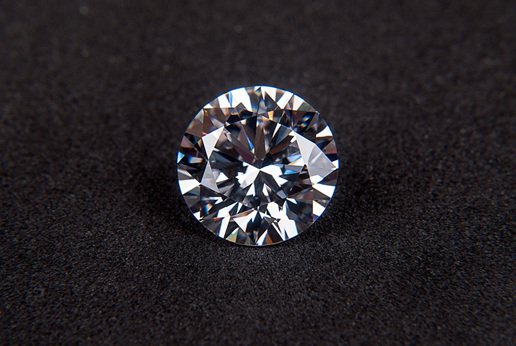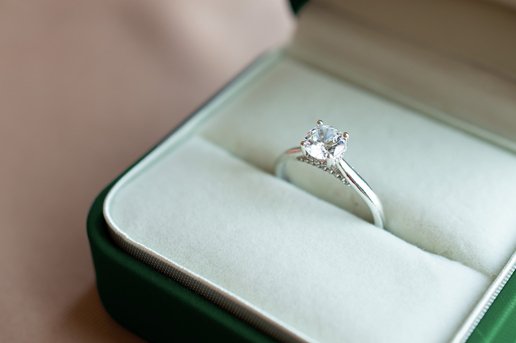Recycling is an effective method of maintaining the ethical value of diamonds. Diamond recyclers mostly retrieve and convert second-hand and vintage diamonds into brand-new pieces. They preserve the symbolic and emotional value while reducing environmental degradation. The main challenge with recycled diamonds is sourcing. Many people rarely want to let go of their heirloom jewelry. Ethical jewelry producers follow a multi-stage procedure to recycle diamonds.
You can buy recycled diamonds online in pre-owned jewelry stores and marketplaces. Shop from independent jewelers on trusted platforms such as Etsy and Revelry Jewelry. Many pawn shops offer pre-owned jewelry at highly competitive prices. Stop by the stores in your location to inquire about vintage and recycled diamonds. Attend online and local diamond auctions. Additionally, check with custom jewelers, antique stores, and estate sales.
Collection Phase
The first stage in diamond recycling involves sourcing diamonds from varied sources. Companies source heirloom jewelry from customers within and outside their locations. They can also source for returned items and unsold inventory from retailers and online sellers. Also, you can get damaged or outdated jewelry pieces from manufacturers. The collection phase initiates the diamond recycling process.
Link up with businesses and jewelers specializing in second-hand diamonds. Partner with trusted diamond refineries focused on extracting diamonds from old jewelry. Explain the benefits of recycling diamonds to heirloom jewelry owners and incentivize your jewelry collection.
Sorting and Grading Phase

Sort the collected diamonds according to size, clarity, cut, and color. Arrange the diamonds according to carat weight and color grade. Start from the colorless diamonds to the light yellow and then brown ones. Examine the diamonds for external and internal flaws and arrange them following that order.
Gemologists evaluate diamonds following standardized grading scales. Awarding of diamond certificates follows strict guidelines, including the four C’s. Grading is an essential tool for ensuring transparency. It helps buyers understand the quality of recycled diamonds. Sorting and grading help diamond recyclers maintain jewelry integrity and foster confidence in product quality. It allows jewelers to sort diamonds according to their unique characteristics and enhances diamond credibility.
Cleaning Phase

In phase three of diamond recycling, jewelers clean and restore the diamonds. Residue, dirt, and oil removal leave the diamond sparkling brilliantly. Thorough cleaning sorts the unattractive mess built up on the diamond. The process improves the overall appearance and makes the diamond ready for sale. Proper cleaning presents the unique diamond features and enables ease of grading.
Diamond restorers have an easier time recreating clean diamonds. The process is fun when setting old diamonds into new designs. Cleaning ensures the final product is impeccably clean and looks clean. Additionally, cleaning enables transparent evaluation of inherent qualities.
Re-evaluation Phase
The cleaned diamond needs evaluation to determine its valuable quality. Gemologists use high-end technologies to examine the cleaned diamond. The process involves checking facets such as cut, size, clarity, and color. They adhere to industry standards approved by renowned organizations such as the Gemological Institute of America.
Diamond re-evaluation helps gemologists determine the suitability of diamonds for repurposing. The process provides the data needed to inform diamond modification and treatment. Re-evaluation aids in the proper pricing of recycled diamonds. It enables gemologists to price these valuable gems following industry guidelines. The data collected from the re-evaluation exercise informs vital decisions regarding expected customizations and repurposing.
Remove Settings
Antique jewelry has striking settings that set the pieces aside. Careful ouster of these settings maintains integrity and intactness. Gemologists use laser cutting and specialized tools to remove diamonds from the jewelry. That ensures a safe ouster and reduces the likelihood of breakage or chipping.
They employ high-end procedures to protect metal settings. You can reuse and recycle the metals individually. They also maintain rigorous measures to minimize material loss during removal.
Creating New Jewelry
Recycled diamonds have elevated demand because of their sustainability and affordability. Gemologists combine recycled diamonds with new materials to create more advanced pieces. They create one-of-a-kind jewelry with unique structures and meaningful backstory. Jewelers can customize designs according to the customer preferences.
Buyers favor ethically and sustainably sourced diamonds. Recycled diamonds are appealing options for environmentally mindful clients. Recycled diamonds carry the distinctive story of the repurposed elements. They hold great sappy value and tell a story of value and uniqueness. Jewelers work on the diamond elements and create more valuable items.
Certification Phase

The last phase of diamond recycling involves certification. Jewelers get certificates for diamonds from reputable gemological laboratories. They assess the elements of the diamond and predict the ideal value. Certification is a reliable tool for providing transparent details about essential diamond qualities. These are the diamond cut, carat weight, clarity, and color.
Recycled diamonds with genuine certificates have more market credibility. Expert grading and certification assure customers of the stone’s quality. Certification should come from credible organizations for assessing and grading diamonds.
Wrapping Up
Diamond recycling has become a more prevalent jewelry production procedure today. People prefer recycled diamonds because of their value and pristine looks. Gemologists follow varied processes when recycling diamonds. Sticking to the strategies above guarantees better-quality results and purer jewelry. Conduct your research to find high-quality heirloom diamonds. You can buy from individual owners, retailers, online marketplaces, and manufacturers.
